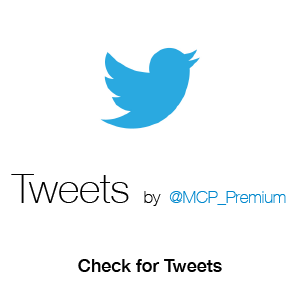Key events this week – S&P Prelim PMIs May, RBA meeting, CPI: Japan, UK, Canada, and the Euro area
Recap from last week – Navigating the Economic Crosscurrents: Tariffs, Inflation, Growth, and Sentiment
We continue to navigate shifts in the economic landscape amid the crosscurrents of evolving trade policy. This past week offered a crucial snapshot of the US economy’s early Q2 growth and inflation performance under the nascent trade and tariff regime. The shifting tariff goalposts have created uncertainty for businesses, consumers, and policymakers. Meanwhile, the impact on and outlook for inflation remain uncertain, but initial hard data for US Q2 growth has largely shown resilience, yet is still challenged by pockets of weakness and downbeat sentiment.
The inflation picture at the start of Q2 continues to be shaped by concerns over above-target inflation, coupled with uncertainty about the impact of tariffs on inflation. Both Fed Vice Chair Jefferson and Governor Kugler’s speeches built on the FOMC’s acknowledgment that risks to both sides of the dual mandate have increased. Both speeches underscored the concern that, given inflation remains above target, tariffs pose an upside risk to inflation. There is still uncertainty over the scope and level of tariffs, the degree to which they will be passed through, and importantly how persistent inflation from tariffs may be. Governor Kugler quoted a Dallas Fed survey that found that 55% of Texas business executives expect to pass through most or all of the costs from higher tariffs to customers. Of those, 64% expect this pass-through to occur within the first three months after the tariffs take effect. That would suggest that tariff-related price increases may be observed soon (Source: Gov Kugler speech).
The impact on prices will hinge on the path and settlement of tariff rates. In the interim, the announcement of a 90-day reprieve from the significantly higher US-China tariffs generated optimism this past week. Tariffs between the US and China will remain at a reduced level during this truce. With the 90-day pause on reciprocal tariffs nearing its midpoint, trade talks have been prioritized among some countries. However, adding to the evolving landscape, US President Trump announced that his administration would begin to set the reciprocal tariff rates for other countries “over the next two to three weeks” (source: Bloomberg).
With the more tangible impact of tariffs on inflation likely still on the horizon, the Apr US CPI offered a slightly cooler reading than expected over the month. The annual headline rate also eased by slightly more than anticipated. Core goods prices continued to make a positive contribution to the change in headline inflation between Apr and Mar, while core services made the largest contribution to the deceleration in annual inflation, along with food and energy categories. Measures of underlying inflation – indicating where inflation might be headed – show a mixed picture. The trimmed mean continues to show progress on disinflation; however, the trend indicates that the underlying pace of disinflation has been slowing. PPI inflation over the month surprised notably to the downside to -0.5% over the month and there was a larger upside revision to the monthly rate in Mar (revised up from -0.4% to 0% in Mar). PPI services were the main contributor to the downside surprise in Apr (portfolio mgt fees & airline fares fell). Together, the CPI and PPI provide a guide for the important PCE inflation result. The Cleveland Fed Inflation Nowcast of PCE inflation over the month in Apr (as of 16 May) shows headline PCE inflation growth of +0.19% and core +0.21% over the month. Core PCE would stay at +2.6% over the year.
The first view of important Q2 growth data showed signs of resilience. The Atlanta Fed GDP Nowcast for US Q2 growth edged higher to +2.4% after data releases. This is still an early reading on growth for Q2 and will continue to evolve over the coming weeks. There was a positive contribution from retail sales and industrial production. US nominal retail sales growth slowed to +0.1% in Apr after a strong, upwardly revised +1.7% in Mar. While this reflects at least sustained spending after the strong Mar result, there is a risk that the pull-forward of demand (notably in autos) may reverse as demand normalizes in the near term, with tariff impacts as a key variable. Industrial production was flat in Apr after falling Mar – as declines in manufacturing and mining output were offset by growth in utilities output. The first US regional manufacturing surveys for May generally showed demand conditions had stabilized, with improvements in future output expectations (not including the response to the US-China tariff reduction reprieve), though input price pressures persisted. There was a small negative contribution to Q2 growth from housing starts, which came in a little lower than expected but increased slightly from the weaker result in Mar. New home builder sentiment fell notably in May.
US consumer sentiment indicators edged lower across most measures in the prelim report for May. However, the survey did capture some early reactions to the news of the 90-day reprieve/reduction on tariffs between the US and China – which seemed to be positive for sentiment. The final reading for May should reflect a broader reaction to the news.
Outlook for the week ahead; S&P Prelim PMIs May, RBA meeting, CPI: Japan, UK, Canada, and the Euro area
As the new trade and tariff regime continues to take hold, data releases will continue to offer an early glimpse into shifts in sentiment, economic performance, and inflation dynamics. While it will generally be a lighter data week, there will be several releases of interest, including the S&P prelim PMIs for May. Other highlights include US existing and new home sales and important inflation data for Japan, the UK, Canada, and the Euro area. The RBA meets and the ECB minutes will be released this week. The tariff backdrop should remain positive with hints of further trade agreement frameworks to be announced in the coming weeks.
Key factors & events to watch this week;
S&P Prelim PMI’s May
The S&P Prelim PMIs for May should provide one of the first reactions to last week’s announcement of the US-China reduced tariff reprieve. This reaction is likely to show up in the future output expectations and sentiment components. The May prelim report should also have a more robust business reaction to the reciprocal tariff pause (back on the 9 Apr). The Apr PMIs reflected a slowdown in growth momentum against a backdrop of the initial tariff and reciprocal tariff announcements, rising prices, and weakening sentiment. Therefore, this week’s PMI data will be crucial in determining if these trends persisted into May and if the various tariff reprieves resulted in a boost to activity and business outlook.
Central Banks
- The RBA meets this week and is expected to cut rates by 25bps for only the second time in this cycle. The last meeting was on 1 Apr, just before the ‘Liberation Day’ tariff announcement amid a heightened sense of uncertainty in the outlook. In considering the path of rates, the Board needed confidence that inflation would continue to move in the right direction. The Q1 CPI helped to confirm the continued progress on disinflation with core CPI easing back to the upper target band, while last week’s labour market survey for Apr recorded strong employment growth and a continuing trend of low unemployment.
- The ECB Minutes of the last meeting will be released this week.
- US Fed speeches; there will be numerous speeches this week, several of which are scheduled Commencement or Baccalaureate speeches (Fed Chair Powell). See the Fed calendar for details – HERE.
Global inflation data – CPI for Apr
- Euro area CPI for Apr (final) is expected to confirm headline inflation at +2.2% over the year and core inflation at +2.7% over the year.
- Canada’s CPI for Apr is expected to slow to +1.6% over the year from +2.3% in Mar. Monthly inflation is expected to increase by +0.5% in Apr, up from +0.3% in Mar.
- UK headline CPI is expected to increase by +3.3% over the year in Apr, up from +2.6% in Mar. Core CPI is also expected to increase by +3.6% in Apr, up from +3.4% in Mar.
- Japan’s National CPI is also expected to increase. The BoJ-preferred core CPI – ex fresh food, is expected to increase by +3.5% in Apr, up from +3.2% in Mar.
US data – housing & regional manufacturing surveys
- US existing home sales are expected to increase to 4.15m (annualized) in Apr, up from 4.02m in Mar.
- New home sales are expected to remain lackluster, slowing to 0.696m (annualized) in Apr, from 0.724m in Mar.
- The Kansas City Fed Manufacturing Index for May will be released this week.
This week, the US Treasury will auction and/or settle approx. $434bn in ST Bills, with a paydown of approx. $12bn. The US Treasury will also auction the 20-year Bond and 10-year TIPS this week – both will settle at the end of the month.
QT this week: Approx $14.1bn of ST Bills will mature on the Fed balance sheet and will be reinvested.
Next Monday is the US Memorial Day Holiday.
More detail (including a calendar of key data releases) is provided in the briefing document – download the pdf below:
Comments and feedback are welcome. Please email me at kim.mofardin@marscapitalpartners.net

